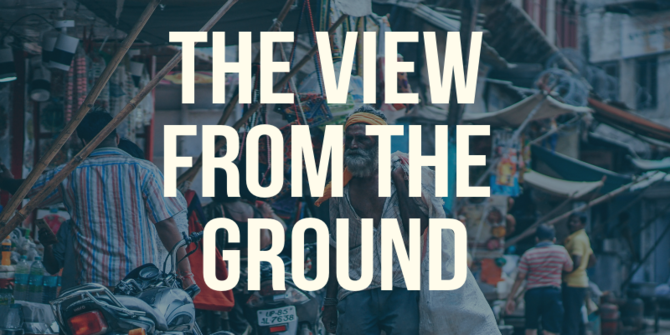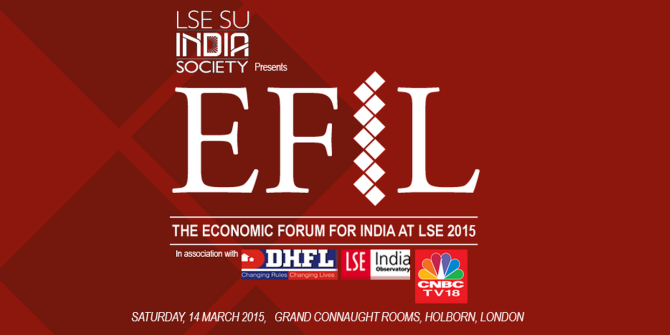In the run-up to state elections in Gujarat, Ajay Singh finds unprecedented support for Narendra Modi’s development model. This post originally appeared on Governance Now.
Seldom does one see such an overwhelming consensus on the eve of polls as is evident in Gujarat. The issue that has an overpowering influence on the electorate’s mind is Narendra Modi, the charismatic but controversial chief minister of the state. In fact, the issues germane to the Gujarat elections begin and end with Modi.
For the past one decade, Modi’s politics has apparently spawned a cult which is distinctly different from the rest of India. Though he is 62, he is adored by the youth who regard him as an icon. Though his regime witnessed large-scale violence on account of inefficiency in 2002, he is acclaimed as the most efficient administrator in the country. He evokes extreme emotions – fierce loyalty among his friends and followers and debilitating fear and hatred among his foes. Beyond all these paradoxes, the mystique of Modi has apparently mesmerised the electorate.
From Bharuch in central Gujarat to Dang in the south, a region with large populations of tribals and minorities, people’s opinions reflect a unique unanimity on development during 11 years of Modi’s rule.
“Of course, there is a semblance of governance even in the remotest part of the state,” says Ayub Pathan, a Congress activist and a hardcore loyalist of the party president’s political secretary Ahmed Patel. He grudgingly acknowledges that the state Congress leadership is no match to Modi.
What is particularly striking is that the Modi cult has permeated deep down even in the remote tribal pockets. The reasons are not far to seek. The state government has launched many welfare initiatives for tribals to win them over. Apart from linking tribal areas to high-quality state and national highways, special schemes were launched to strengthen village cooperatives and encourage tribal women to produce and sell milk. In all over the tribal belt, queues of women at collection centres are a testimony to the success of the scheme. A random conversation with the tribals in Dang district clearly showed a high level of contentment. “Our income has gone up ever since Saputara was developed as a tourist resort,” said a young tribal who runs a tea stall in the hilly resort which boasts five-star and three-star hotels.
Moreover, tribals betray no bitterness over the development paradigm which can create disparities. In tribal regions of Gujarat, infrastructure development has given a fillip to people’s aspirations without creating any hiatus between ‘us’ versus ‘them’.
Similarly initiatives undertaken by the government on the agriculture front are seen as roaring success. Farmers are being educated about new and modern agriculture practices to get the maximum yield. Soil tests have been carried out all over the state to help farmers choose the right crop for the given variety of soil.
Professor Kiran Pandya from the economics department of the Surat university is credited with conducting many field surveys to gauge development indices in the state. After a series of field researches, he surmised that the focussed approach on tribals and agriculture had benefitted people on a large scale. “There is a marked improvement in health as monitoring of health services is quite rigorous,” he said.
Pandya is quite optimistic about the possibility of a remarkable improvement in the human development index (HDI) in Gujarat. But how does he explain the growing malnourishment and poor indices of HDI in the state? Pandya feels that statistics is a bad tool to gauge people’s contentment. “Moreover, this [HDI indices] is based on old statistics,” he pointed out.
Obviously Pandya’s observation is premised on ground reports that suggest a marked improvement in health and primary education. For instance, there is all-around appreciation of the 108 ambulance scheme which is only a phone call away for every citizen. “This is a wonderful initiative,” Pandya said. At the same time, the efforts to maximise enrolment for elementary education and check dropouts have started bearing fruits.
According to BJP spokesperson Nirmala Sitharaman, the chief minister has devised a comprehensive political strategy to win over people and left nothing to chance. “For the past five years he has been consistently plugging the weak areas and getting feedbacks on his initiatives through different sources,” Sitharaman told Governance Now in Rajkot. His comprehensive political strategy has effectively neutralised the pockets of opposition in the state.
Sitharaman’s prognosis is not without basis if one looks at the meticulous manner in which Modi and his campaign managers have been trying to micro-manage the elections. For instance, there is a consistent attempt to win over the minorities even if it is only symbolic. In Surat and Rajkot, local influential Muslim leaders have been roped in to be a part of the propaganda machinery. If Christians have been included in the party fold in Dang, Muslims have been drawn in as interface with the media in Ahmedabad, Rajkot and Surat. Though the party’s hardcore Hindutva cadre looks at it sceptically, Modi’s strategy to reach out to the minorities is calculated to help him in his future ambitions.
If politics would have been all about micro-management and propaganda, there would be little doubt that Modi would win hands down. But there are certain dynamics emerging from Saurashtra region where the economic slowdown has combined with the political assertion of the influential and hostile Patidar community to upset the BJP’s applecart. The scanty rains this year have ruined the crops in Saurashtra. What has complicated the matter is the declining export of cotton on account of a downturn in the world economy.
“Rajkot is the worst affected by the scanty rains these years,” said Professor Purshottam Marvania, a vocal critic of Modi’s model of development. “You see, they have created and insulated an area of affluence stretching from Mehsana (in north Gujarat) to Vapi (in south) where world-class infrastructure has been developed to attract big industries,” he said. In his view, the areas lying outside that strip is a study in contrast as poverty, malnutrition and administrative apathy characterise governance outside the privileged zone.
If the caste equations are against Modi and there is an undercurrent of social discontent, none is visible. That the Congress is groping for an issue other than Modi is only indicative of the constricted space for the opposition in the state. In Surat where Modi’s bête noire and Congress candidate Dhirubhai Gajera is set to contest the election, his fulmination against Modi has considerably reduced these days. There are rumours that he has had made peace with Modi. That would be yet another instance of his micro-management strategy.
By all account, the Gujarat election would be a test case for not only political research but also an interesting study of management principles as well.
About the Author
Ajay Singh is the Managing Editor of Governance Now.







